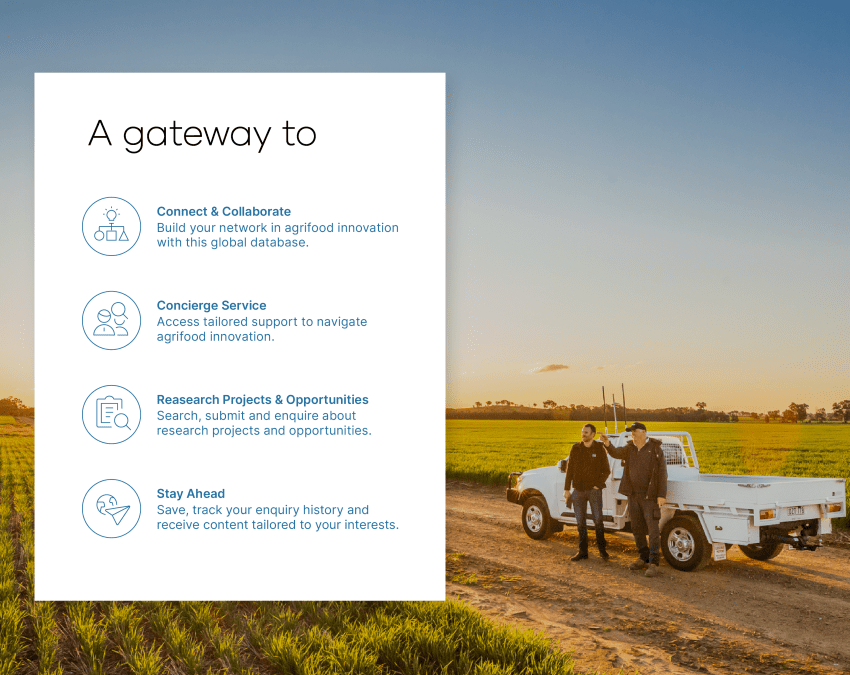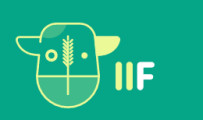
New app allows investors to back farm production
Innovative Invest-Inya-Farmer fintech app offers investors “a farm in your pocket” and a slice of food production’s profits, as well as giving farmers access to new capital without taking out bank loans. After successfully working with the cattle, oyster and bee industries, Founder Nathan McPhee is seeking engagement from farm collaborators in broadacre cropping, fruit and vegetable industries.
-crop-1185x680.png)
Imagine living and working in Sydney and Melbourne but being able to make profits from investing in the food produced across multiple sites and sectors. Think two organic beef cows in Wangaratta, a thriving apricot tree in Shepparton, a hectare of chickpeas in Moree, a row of Shiraz vines in Yarrawonga, a beehive in Darwin or a basket of oysters in the Hastings River at Port Macquarie.
Or imagine being the farmer of any of those animals and crops, and benefiting from an early injection of capital into your agribusiness without taking out a bank loan thanks to a mutually beneficial relationship with city investors and consumers keen to play a role in producing good, local and sustainable food
That’s the basic concept behind Founder, Nathan MacPhee’s idea of using his 20 years of experience in the financial services industry to create a fintech app linking producers and investors - and helping make Australian agriculture grow, and be more financially viable and robusta.
The innovative Invest-Inya-Farmer (IIF) app is described as giving every Australian the opportunity to have “a farm in your pocket”.
It is also a world-first new model for agricultural investment.
The app allows any consumer or investor to invest a bit of spare cash – from $100 upwards - via their mobile phone to begin their own “farm” or agricultural investment “portfolio”, in which they invest in the produce or output from living assets on a specific property, managed by a professional farmer, through a cooperative structure.
An investor could put $5000 for example into IIF and choose to own the produce from two Angus steers, a beehive, five free range hens and some rows of vines in Victoria, or the output of a hectare of grain crops, five avocado trees and some oyster baskets in northern NSW.
RELATED: Enquire and learn more about Invest Inya Farmer partnership opportunity here^
Financial model; not about paddock to plate food
Related organisations

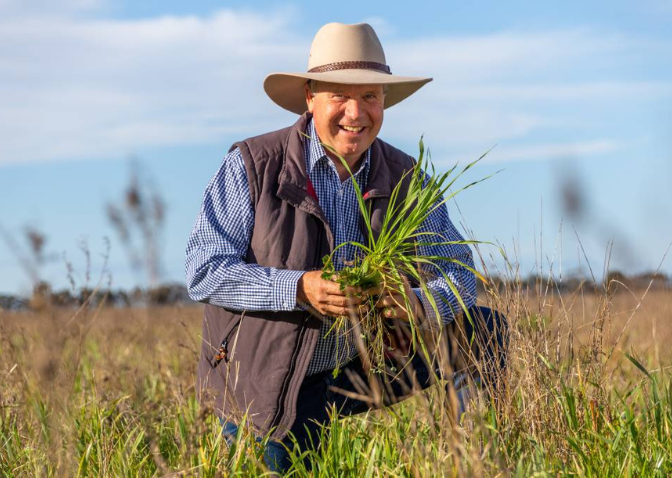
But there is no feel-good receival of actual farm-to-fork food or visiting of farms; IIF is a financial model about generating profits for investors and delivering greater financial certainty and capacity for farmers.
For example, a meat sheep producer might choose to put 100 newborn Suffolk lambs on her Gippsland farm into IIF “ownership.” An investor chooses to “buy” two lambs for their farm portfolio at $100 each, although what he is actually buying is 2% of the lamb flock’s average return upon their sale.
The farmer gets that $200 upfront, allowing her to purchase extra ewes to add to next year’s production flock, improve fencing on the farm, or even contributing to her financial ability to lease or buy a few more hectares nearby to expand her agribusiness.
The lambs are sold in six months time for an average price of $130 each, or $30 profit per lamb. The farmer keeps half the profit to cover her costs ($15), IIF takes 10% of the profit ($3 per lamb), while the investor gets his $100 back plus the remaining $12 profit per lamb.
It translates into a 12% return on his initial investment in less than a year.
“It’s a financial investment but it’s also driven partially by emotion,” explains Nathan MacPhee, who lives with his own family on a small farm near Mansfield in north-east Victoria.
“It’s like investing in shares but it is much more personal and direct, because you actually get to know the farmers you are backing, select what sort of farming you want to invest in and where the animals are located which spreads your risk and exposure; I like to call it profit with purpose or impact investing.”
Idea born during pandemic
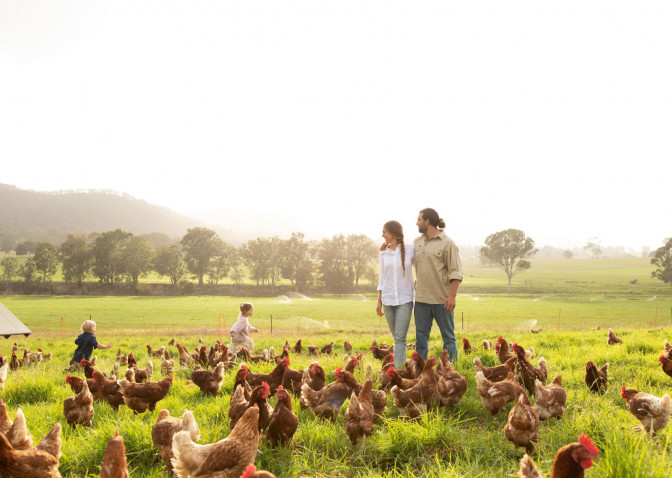
The idea behind Invest-Inya-Farmer came to Nathan during Covid-19 lockdowns in 2020 when he could no longer commute to his financial sector job in Sydney from his home in country Victoria.
“I decided to take time out – as well as home schooling our two kids - to think about what I wanted to do next, and I had this fleeting thought that I’d like to get into farming,” recalls Nathan.
“But I didn’t have enough land on our 20 acres (8 hectares) just out of town and quickly realised, Iike many other young people who want to get into agriculture, that I couldn’t afford to buy a viable, productive farm.
“So I wondered if I could buy a cow or two on an existing farm, fatten them out and split the profit with the farmer, and if that could in some way add value to producers; sort of like financial share-farming. ”
The conversations were enough to give Nathan a germ of an idea, based on his experience in investment markets, which was then developed and refined in a local Victorian incubator program, Startup Shakeup.
Bridging the city-country divide
The pandemic itself has shown just how critical local farmers and the food they produce – as well as the security and reliability of supply chains – are to the everyday lives of ordinary Australians, most of whom live in the big cities and their sprawling suburbs.
Yet agriculture has become an industry most Australians know little about, far removed from their own personal or family experiences, and which they can’t ever actively participate in. For a young person keen to become a farmer, even if they have formal agricultural training or a farm background, the cost of buying land and establishing a viable rural business has become prohibitive.
Nathan believes his Invest Inya Farmer app can radically change, or at least disrupt, that situation, by giving investors unprecedented exposure to, and a connection with, actual food production, farmers and farm business experiences, both good and bad.
Invest in agriculture without owning a farm
“It means anyone can invest in agriculture and food, without owning a farm or the land,” said Nathan. “Farmers gain capital from consumers, without having to borrow from a bank or take on extra risk, by effectively pre-selling a portion of their produce to improve their cash flow or spread it more evenly across the year.
“And for investors, the IIF app gives them access to high growth assets and potentially attractive returns that you can’t get anywhere else without ever stepping foot on a farm; because you are not investing in either the land or an (ASX-listed) agribusiness, but in the food and produce that the farmers grow.
“It’s sharefarming for the digital age, with investors supplying the capital, the farmer supplying his farm and expertise, and both parties sharing in the profit when the produce is sold.”
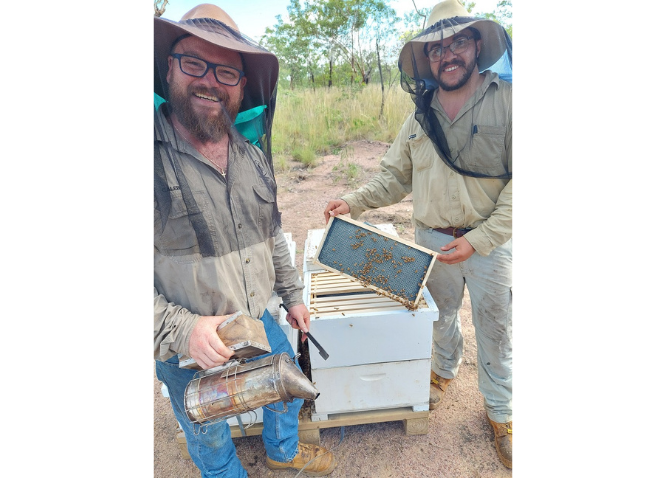
This unique form of capital also reduces a farmers’ production risk, as the return to the investor only ever equates to the actual outcome of the season. So, a bad season is borne by investors and a good is shared. Investors can absorb the difficult times as they have smaller exposures and can diversify, both geographically and across farm systems.
Since the app went “live” in September following initial funding from family and friends, Nathan has more than 20 farms participating in his scheme across 5 states and hundreds of investors, who pay $50 a year membership to belong to the IIF cooperative, which buys and holds the assets on the members behalf. .
The app allows investors to physically see, via a graphic and map on their mobile phone, just where the cows, grapes, oysters, grain crops or lambs on the farms they have chosen to invest in are located and how they are faring, as well as what returns are being generated. The farmers also send regular updates through the app during the growing cycle.
RELATED: Ecosystem Farms - ‘Just add gravel and fish:’ EcoSystem Farms’ unique solution to growing a food secure future is now seeking investors^
Global and industry expansion next steps for IIF
A $1.2 million capital raise was recently complete, with support from a local and offshore venture capital firm specialising in agriculture.
This capital will be used to expand IIF in Australia and conduct an overseas pilot given that the IIF model is eminently scale-able, Global expansion would allow investors to further spread their risk exposure to agriculture geographically and across different types of produce, such as tea plantations in Sri Lanka, rice growers in Thailand or even urban indoor farms in Singapore.
MacPhee’s early-stage business plan, based on current interest and investment, is that more than $5 million will have been invested in Australia agricultural production via his IIF fintech modelthis year.
Within five years, the long-term objective is to be delivering $1 billion of capital into agriculture annually, which Nathan says is a relatively-modest vison based on 100,000 people investing an average of $5000, turned over every six months.
Along with global expansion, Nathan is looking for engagement from farmers and producers in broadacre cropping and horticultural industries such as orchard and vegetable, that are interested in collaborating with this novel farm production investment platform.
“We think it’s going to grow very quickly, because investors can see these are real assets capable of generating good returns and can spread their risk, although they are also exposed to the volatility of farming too,” said Nathan.
“But we know we add value to agriculture by building the connection consumers have to farmers and food production and making capital available to agriculture; the model is sound and, just like Airbnb and Afterpay, it will take a while to build but we expect it to take off rapidly…”
If you would like to be a farm collaborator or have a farm in your pocket, you can learn more and make contact with Nathan via visiting the partnership opportunity here.
The information in this article is general information only and should not be taken as constituting professional advice from AgriFutures Australia. AgriFutures Australia is not a financial adviser and not received any benefit from a third party for promoting this opportunity. Before acting on any information, you should consider the appropriateness of it and the relevant product having regard to your objectives, financial situation and needs. You should consider seeking independent legal, financial, taxation or other advice to check how the information relates to your unique circumstances. AgriFutures Australia is not liable for any loss caused, whether due to negligence or otherwise arising from the use of, or reliance on, the information provided directly or indirectly, from the information contained in this article.
^This investment opportunity is only for professional and sophisticated investors as defined in the Corporations Act 2001 (Cth). The content of this opportunity is intended for use by persons having professional experience in matters relating to investments and must not be acted or relied upon by any other person including, without limitation, retail clients.
-crop-850x675.png)
Looking for engagement?
Showcase your commercialisation opportunity today.
Talk to our team to discuss how growAG. can connect your innovation to industry.
Have questions? Find answers to our most frequently asked questions on research projects, commercial opportunities, organisations and more.
